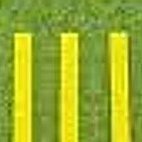What Is The Optimal Photo Resolution For Web Displays?
-
Recently Browsing 0 members
- No registered users viewing this page.
-
Topics
-
-
Popular Contributors
-
-
Latest posts...
-
55
Older Retirees and Younger Partners in Rural Thailand: Accepted or Not?
Yeah, Thai movie narratives all move in reverse. Happy at the begging and tragedy at the end. -
55
Older Retirees and Younger Partners in Rural Thailand: Accepted or Not?
Or if your wife is a lot older. -
55
Older Retirees and Younger Partners in Rural Thailand: Accepted or Not?
It would make a good comedy movie. With a happy ending at the start of the movie. -
80
US CDC report shows no link between thimerosal-containing vaccines and autism
There ya go again. You are backing a loser, and you know it. Big claims from you, but no evidence. My take; viruses might exist, but are undisguisable from decaying cell debris. They are inert and not pathogenic. You say they are; then produce the evidence. Why don't you! To quote a passage from Dr Roytas' book. ''The claim that colds and flu are contagious, may be one of the greatest ever blunders of medical science. Prepare to be shocked as this book brings to life the buried data that can no longer be ignored.'' Is he wrong? A man that has just published a best seller? www.CanYouCatchaCold.com and has documented over 200 research papers and experiments during the last 100+ years. We are nothing without nature.- 1
-

-
0
Scottish people are scary! (says my young Chinese student...)
Chatting to one of my young (10 years) online Chinese students today, and he explained that he had just returned from a holiday to the UK. He said that he visited London and that was nice, but he also went to 'Eedinberg'. "Where?" I asked, and finally had to get him to spell it out "Edinburgh!" "That was very scary" he said. "I was scared, my brother was scared and my parents were scared!" "Why?" "There were many men in the street shouting and hitting the walls of the shops, or lying on the pavement. They shouted at us and other people for no reason. They were like mad people!!" And so there you have it. Give Scotland a miss 'cos it seems to be full of shouty, scary people.... -
117
Trump has abandoned the Ukraine.
When the previous administrations let russia get away with everything and trump sanctions them, its only leftists that could claim that nonsense
-
-
Popular in The Pub






.thumb.jpg.82631abb512ae61a745d964452c5b1b9.jpg)








Recommended Posts
Create an account or sign in to comment
You need to be a member in order to leave a comment
Create an account
Sign up for a new account in our community. It's easy!
Register a new accountSign in
Already have an account? Sign in here.
Sign In Now